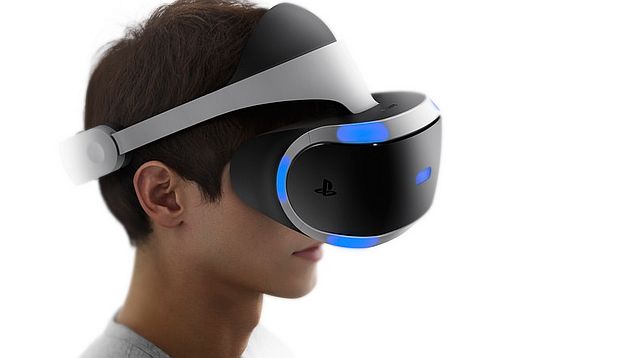The flurry of announcements and sessions at GDC continues, and the two most important companies in the console market aren’t just sitting on their hands. Both Microsoft and Sony made some important announcements, and by looking at what was said (and not said) you can get an idea of what’s going to be important to them in the coming year. After all, GDC is the most important show of the year for influencing developers and the rest of the business. E3 and Gamescom are big, but they are aimed at influencing the consumers. GDC is where companies have a chance to influence the development community and the businesses that serve them, so actions taken here can have an outsized influence over the rest of the year.
Sony’s clearly putting a tremendous effort into VR with Project Morpheus, and it shows. The company’s demos are more impressive, the hardware looks more refined, and for the first time Sony has given a hint about a ship date: the first half of 2016. The screen resolution is now 1920 x 1080with a refresh rate (doubled from last year) of 120Hz, and the new 5.7-inch screen also has a higher field of view (nearly 100 degrees). The latency is now significantly lower, under 18 milliseconds. The OLED screen produces gorgeous colors, too. There are now nine LED sensors on the outside, providing better resolution to the PlayStation Eye camera for better tracking.
Sony’s got great game development resources to put into Project Morpheus, of course, but let’s not forget Sony Pictures as a possible source of content — and all of the Hollywood connections there. There should be no shortage of VR experiences ready for Project Morpheus next year.
Sony’s got a comfortable lead in the console market, but as that competition heats up they will need to bring more to the table — and Project Morpheus looks like it’s a major part of Sony’s plans. One advantage Project Morpheus will have is that it’s integrated into a complete ecosystem already. Sony’s got proven controllers (the Dual Shock and the Move, both of which are readily tracked by the Eye camera), the Eye camera, and the power of the PS4. We’re not exactly sure what other hardware you might need for an Oculus Rift, but if you have a PS4 you’ve already got the core you need for Project Morpheus. That should make the hardware an easier sell.
Don’t ignore the PlayStation Network, either, which will be able to easily deliver new content for Project Morpheus. There are a lot of moving parts necessary to make VR a viable business, and Sony already has the essential pieces. What remains is more engineering, and a lot of hard work integrating all those pieces — and constructing the right marketing strategy for them. And, of course, the content, which is really the key. The hardware is only important in that it delivers the experience, but if the experience isn’t compelling enough, it won’t matter how good the marketing or the hardware or the business model is.

Meanwhile, Microsoft is making headway on its grand effort to unify its various platforms under Windows 10. The company released more information at GDC, and Phil Spencer outlined the core. Microsoft wants to enable one identity, one universal app, one store, and one game that runs across all Windows devices, Spencer said. “The core product of what you are building will extend across the whole Windows 10 community including Xbox,†he said. “Our investment in Windows Store has never been higher than it is now. You will be able to develop and distribute your game across the entire ecosystem using that one store.â€
Meanwhile, indie developers continue to be important to Microsoft. ID@Xbox director Chris Charla confirmed the program would soon cover Windows 10, enabling developers to self-publish on an array of Windows devices, from phones to tablets to the upcoming HoloLens. Microsoft will leave it up to developers to determine whether they will allow touchscreen, keyboard, and game pad players to play with each other. To date, Charla said the ID@ Xbox program has seen more than 1,000 Xbox One dev kits sent to indies and 40 games shipped, with more on the way.
Looming over all of the Windows 10 talk is the impact that DirectX12 is likely to have by significantly increasing game performance on the Xbox One as well as on PCs. We’re going to see more graphics power unleashed by DirectX12, and with Windows 10 going across platforms (including mobile devices), developers will be able to bring games to more devices faster. Microsoft even announced an upcoming device that will let you use all your Xbox One peripherals on PCs, though the price wasn’t shared. There’s also the streaming functionality that will let you play your Xbox One games on Windows 10 devices…. and possible vice-versa as well.
Microsoft is finally unleashing the power of its PC market share to influence its success in the console market — as well as using its gaming strength on PCs and on mobile. The Xbox Live service is being given an important role on the new Windows (with an Xbox app for everyone running Windows 10), which means games will be more important, too. This is all part of Microsoft’s strategy to wrest the console leadership away from Sony, and to make Microsoft more of a player in the mobile market.
It’s going to be an interesting year ahead for console gaming.

